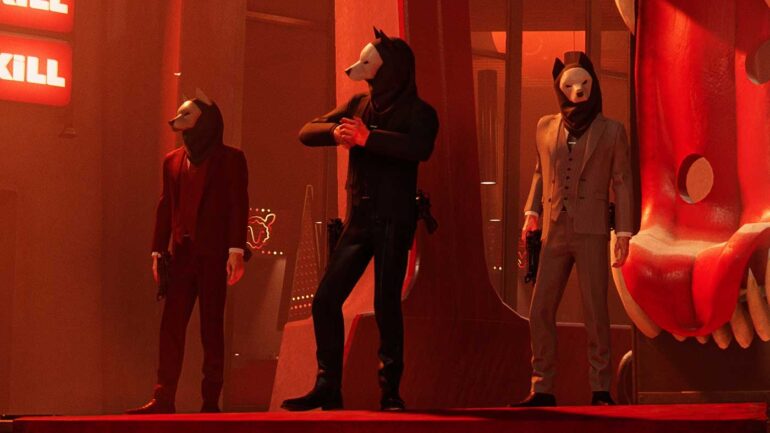Deathloop oozes style, that much is obvious. Every glimpse of it we’ve seen since it’s announcement back at E3 2019 suggests as much.
What has been less clear, however, is just exactly how the player will navigate this complex, sixties-inspired world of murder, magical powers and time loops.
Sitting down with Arkane — all the way from Lyon, France — I ask them to explain what they mean when they describe the game as a ‘murder puzzle’.
What’s Deathloop all about?
“It’s more about the campaign or the story itself,” says Dinga Bakaba, Deathloop‘s Game Director.
Taking on the role of Colt, an assassin imbued with supernatural powers, you must break the loop in the only way possible: “killing the eight visionaries before the end of the day.”
The Visionaries, the inhabits of the time-affected island, Blackreef, revel in an endless party shirking all responsibilities and moral decency. Scattered across multiple districts, Colt needs to hunt down and eliminate each Visionary before the day is out.
Of course, you’ll need to be on the lookout for one Visionary especially: Julianna. The exact relationship between the pair is unknown, but for whatever reason Juliana is hellbent on stopping Colt from completing his objective. She’ll show up unannounced throughout the game making a concerted effort to wipe you out every loop.
Rather neatly, the role of Juliana can be assumed by a player tasked with making your life difficult in an unconventional take on multiplayer. I was excited to hear that you have the option to be ‘invaded’ only by friends and, inversely, raid a friend’s game should you choose.
How does the time loop work?
The time loop continues as long as one Visionary stays alive. You need to locate and assassinate them all in one day to break the loop. Thankfully, you’re not up against a countdown clock in taking them all out.
“The game is divided into four periods of time: the morning, noon, afternoon and night,” explains Bakaba. “At each barrier, you can choose a district to go… [but] the most [Visionaries] you can kill is four because there are four periods in the day.”
“From the start, it’s an impossible mission,” explains Bakaba, “but you are the assassin that is doing the impossible, and you do that by investigating the targets and trying to find loopholes in their schedules.”
The challenge then resides in “uncovering the impossible… reading clues, listening to conversations and finding abilities.”
Piecing together the ‘murder puzzle’ — through multiple loops — you must find the ‘perfect loop’ in which all Visionaries are brought together so they can be knocked off in a single day.
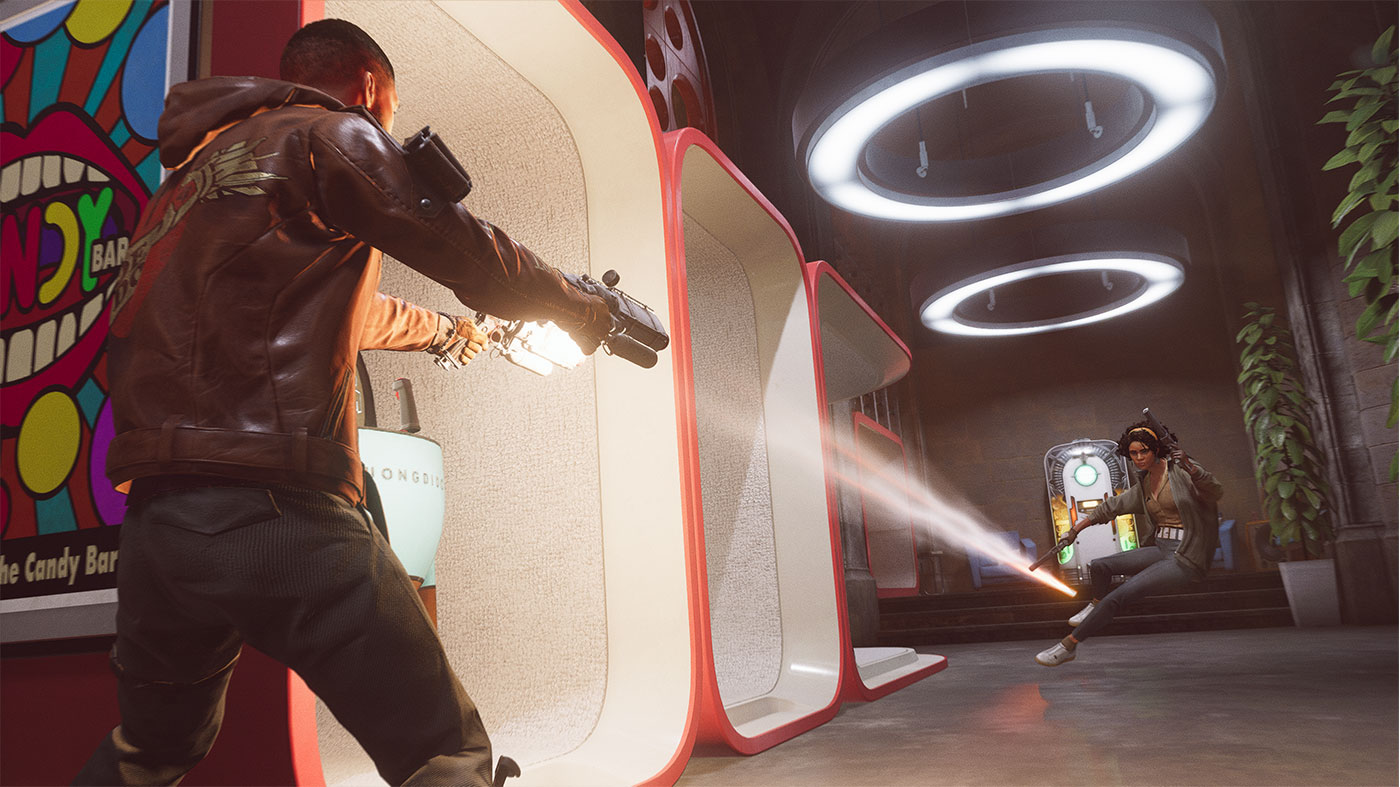
And every time I die, I have to start again?
Although it conjures up ideas of a roguelike, Deathloop hasn’t been described as such.
Knowledge is power, as is repeated in the most recent ‘Deja Vu’ trailer; with every loop comes extra wisdom that helps you progress in a seemingly more linear fashion than games of the roguelike genre.
Colt’s memories survive each reset and so is granted the opportunity to gain extra, valuable intel. Each loop means more knowledge which you can leverage to get your targets where you need them, edging closer to the ‘perfect loop’ in which you assassinate your targets in a fell swoop.
Dying triggers a reset — as too does the expiration of the fourth period in the day — but you’re not without a second chance. “Colt has a power that we call ‘Reprise’, that allows him to rewind just a tad,” describes Bakaba.
“It’s a little bit like a BioShock Vita-Chamber, but you only have two and it’s not on a set place, so it will just go back dynamically. Sometimes it will take you back to a situation that is not preferred, but you have a few seconds of invincibility to hide.”
No doubt that’ll come as a bit of comfort.
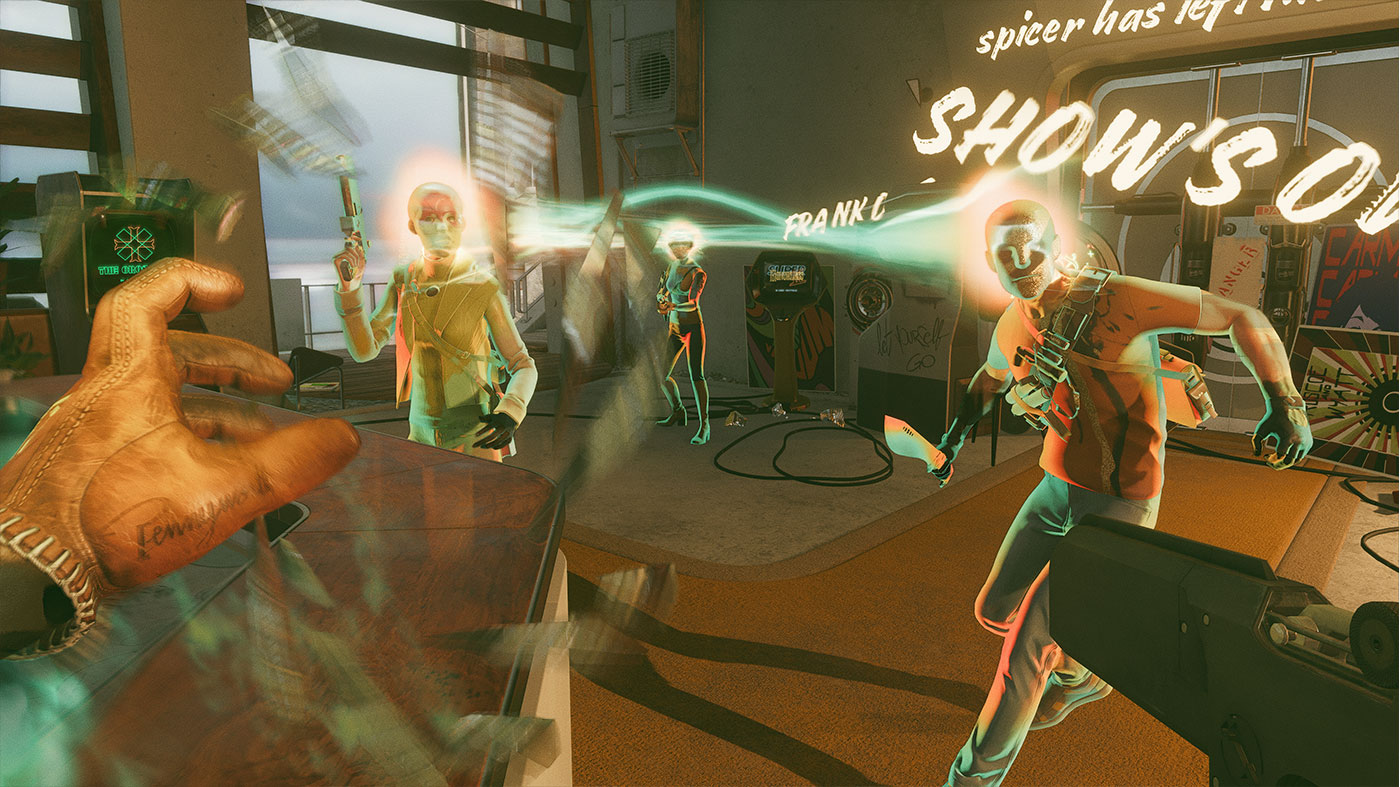
But I’m not good with puzzles. Should I be worried?
Concerned the more impatient or time-poor gamers out there — that could be turned off at the prospect of a rinse-and-repeat, Groundhog-esque gameplay mechanic — I queried how much direction we could expect.
“That’s something we’ve been working on for the last year at least,” noted Bakaba, “we have to build this very complex structure and then making accessible was the second step.”
“The way we are approaching it is to have the beginning of the game be a bit more directed to push you through the beginning of the story, and acquiring the core gameplay.”
After the initial guidance, “hopefully, you’ll have a good idea of where to go next, and you’ll have a number of investigations or leads open at the beginning, and then you’ll have more as you go to meet the other targets.”
For those eager to stray from the beaten track, “there are quite a few things to discover in the way of side content, gameplay vignettes with rewards and some of the unique weapons that are hidden on the island as well as learn a little bit more what happened before the story begins.”
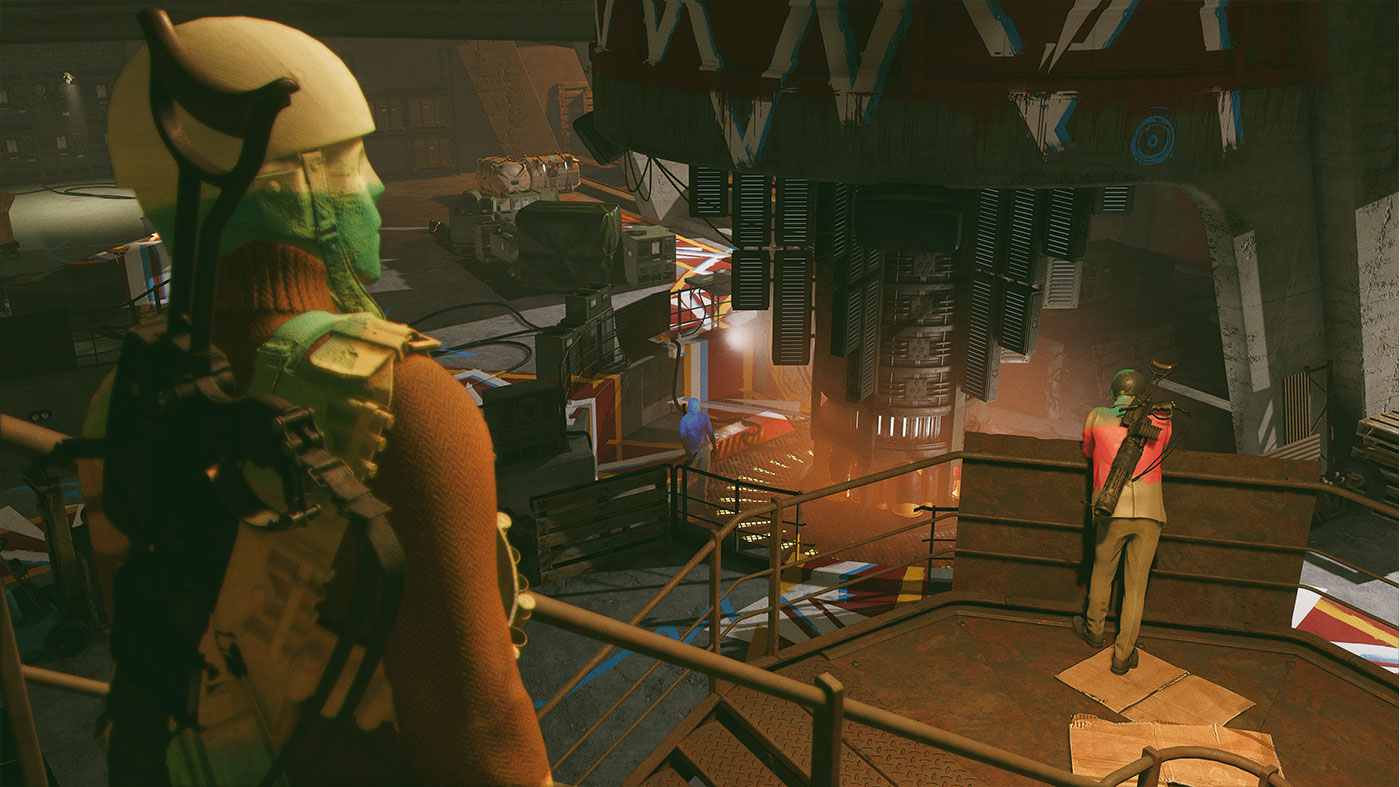
How does each loop vary?
Seeing as we’ll be spending a bit of time revisiting each area, I was curious to find out how much each district might vary between visits.
I was surprised to hear Bakaba reply, “the loop itself doesn’t change much… it is the same area, which allows the area to learn where the dangers are or where the patrols are.”
It makes sense what they’re trying to achieve. Again, it harkens back to the “knowledge=power” mantra; the more familiar you get with each loop, the more efficient you become dispatching foes.
However, “each [time] period is quite different from the one before,” notes Bakaba, “the patrols are different, some areas are open and some are closed, the side content is available or not available, the weather will be different during the day or night.”
Additionally, “each district has a kind of story that happens during the day.” He goes on to tell me about one district in which a concert is set to take place in the afternoon: in the morning a truck rolls up with the sound system but by the evening the concert is over, and something seems to have gone wrong.
Consider me curious.
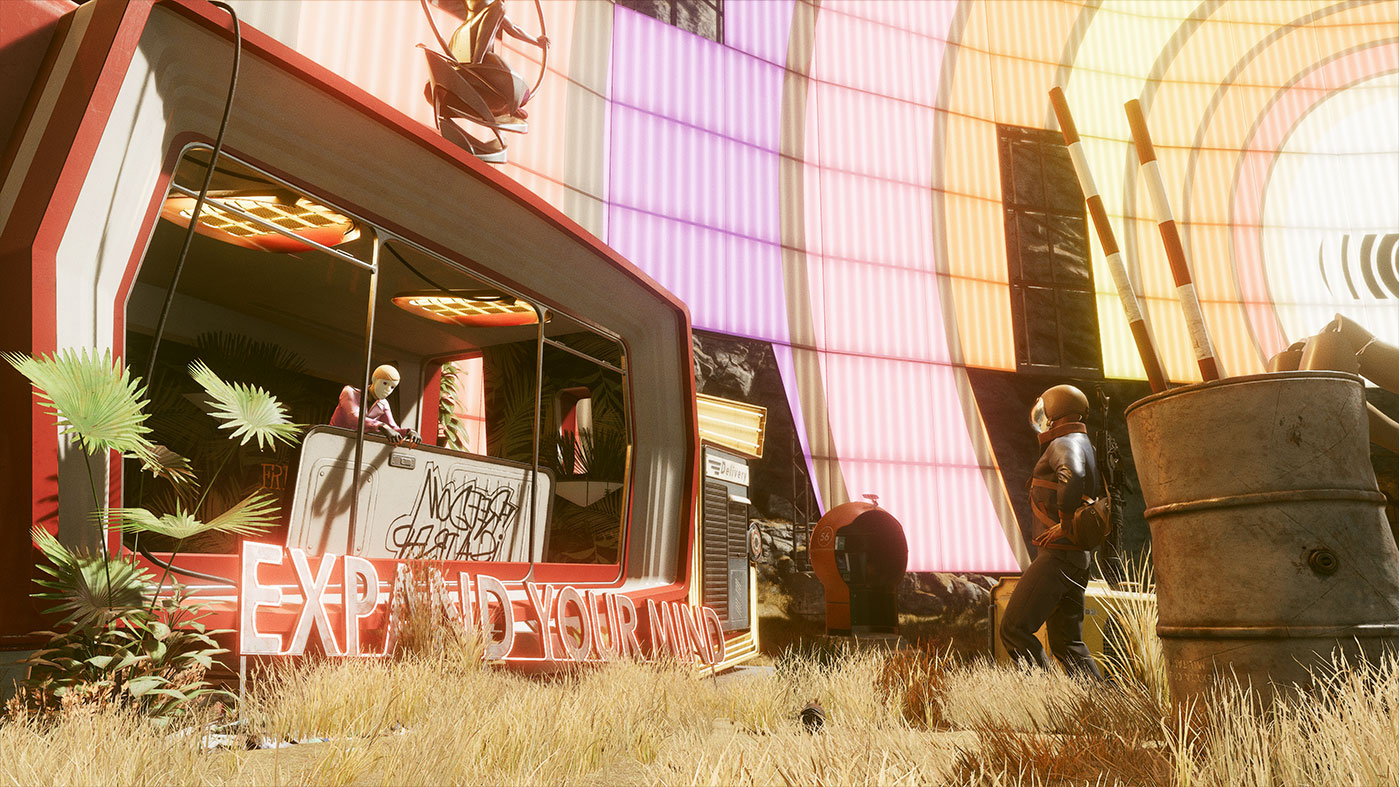
What might you take away from Deathloop?
Curious too about the themes of the game, I quizzed Deathloop‘s Art Director, Sébastien Mitton, on what might stick with the player after they’ve rolled credits.
“I hope they have a trip that they will remember, but this is quite something… [and] the journey is more important than the destination,” replied Mitton.
“If we can get people to think about what it takes to break out of habits or the fact that there is a cost of escaping reality… but moving on is definitely one, and refusing to accept reality and growing up is also another one that we liked to infuse in the game.”
Whereas, “Dishonored was a lot about political themes and people with power… Deathloop is about personality and ecological things.”
As I once rambled on at length about Firewatch, I’m a big fan of any exploration of the theme of escapism within the context of video games.
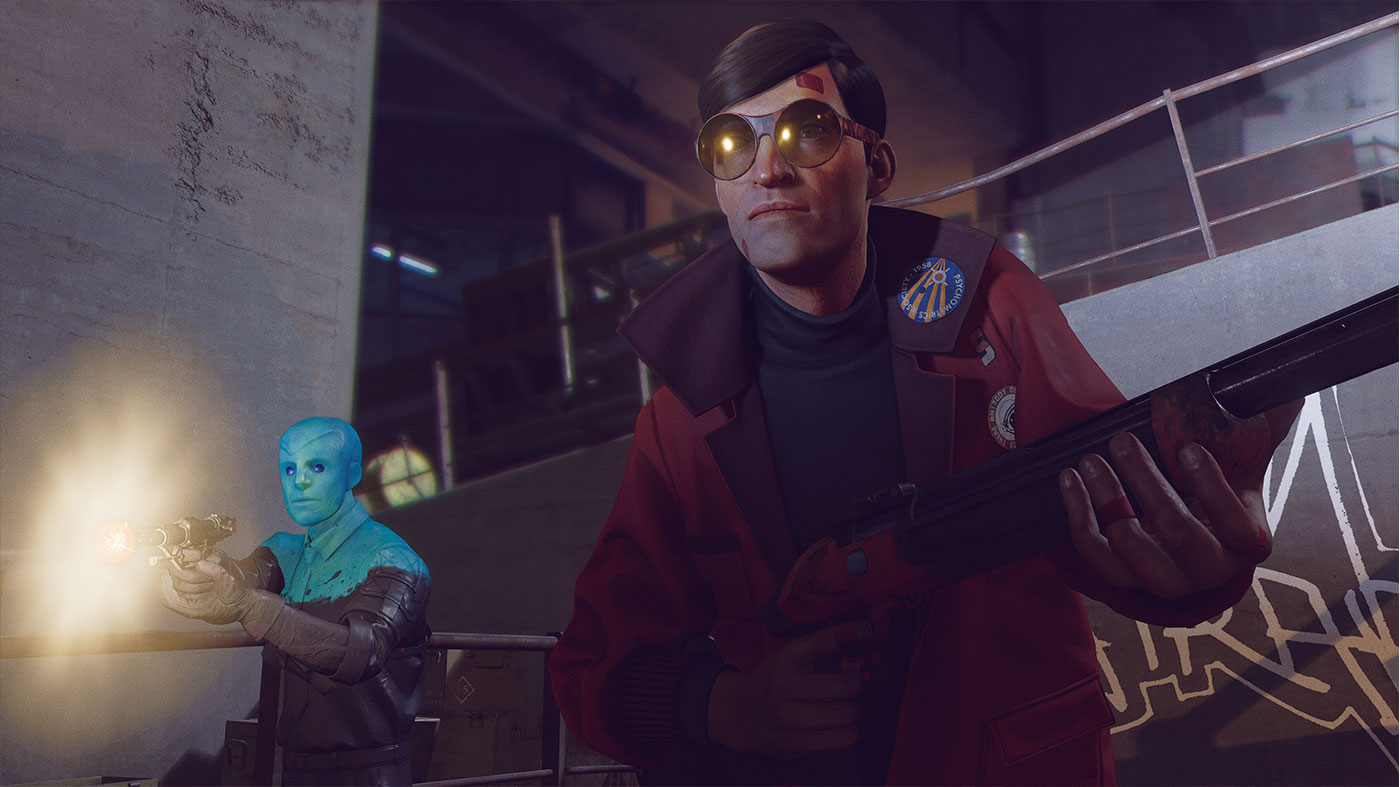
Could there be more Deathloop to come?
Also weighing in on the game’s themes, Bakaba added, “there is [sic] always more stories to tell, but at the same time, it’s been envisioned as a self-contained thing.”
“Since the theme is about moving on, I think it’s fitting that it’s something that has a beginning and an end to this story,” added Bakaba.
“We might want to explore things in the future, but the story doesn’t end with a cliffhanger.”
Deathloop is out on PS5 and PC on May 21st.


